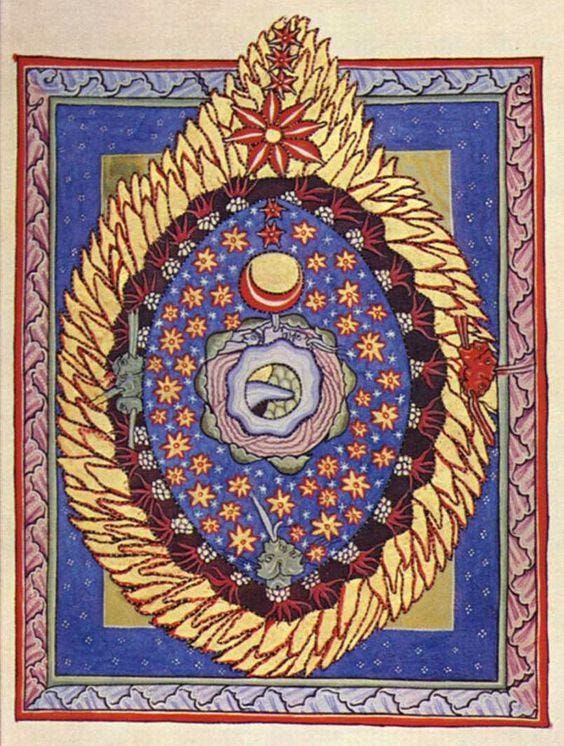
Picture a typical world leader.
I’m going to guess that you pictured an older man. Grey hair. A suit.
I’m going to guess that you did not picture an older woman. Because why would you? Older women, we are told in a thousand ways every day, are irrelevant; maybe kind and caring but definitely not powerful; responsible but not desirable or exciting.
But I need to tell you something.
I need to tell you that two months before my fortieth birthday, I am waking up every day feeling quite literally electrified by ideas and by my life’s mission—something that never happened to me as a younger woman. Some days the energy coursing through me is so intense I can barely manage it.
I need to tell you that even as my hormones change—which mine are doing much earlier than most women’s do—I have never felt more alive, more vital, more sensually switched on, more sure of myself, more wise, more powerful.
I need to tell you that there is nothing natural or inevitable about women losing power or vitality of any kind as we approach midlife and beyond. That in fact, this is a pack of lies we’ve been sold in the modern era, which would have been unrecognizable to our medieval sisters.
In her book Femina: A New History of the Middle Ages, Through the Women Written Out of It, Janina Ramirez writes about one of my heroines, Hildegard of Bingen. This twelfth-century polymath wrote major works of theology, invented a new language, founded two monasteries, advised world leaders, composed music of a kind nobody had ever heard before—and that’s just the start of her achievements. But, writes Ramirez:
Why has Hildegard’s name survived down the centuries when those of so many other medieval women have disappeared? Her longevity and productivity had a lot to do with it. If she had died aged 50 she would have left behind only a handful of songs and one book. But the latter part of her life was one of extraordinary creativity and a staggering output of work.
Why? Where did this outpouring of creativity in the latter part of Hildegard’s life come from?
All her life long, she had experienced visions: whole-body revelations of divine meaning. And these visions increased explosively while she was in her forties. Ramirez writes:
She had experienced visions since she was a toddler but had kept them to herself out of fear that they would be misconstrued. But her visions took on a new complexion in 1141 [when she was around 43 years old], growing in intensity and intricacy. She describes receiving a “calling” to tell others about them. […] The change in nature of Hildegard’s visions in her forties unlocked a whole new phase of her life.
Let’s hold Hildegard in mind as we consider a recent piece by the cultural critic
, who you should all be reading here on Substack. In “Are You in the Portal?”, Petersen writes about “the weird spiritual / emotional / professional / transitional portal that women ages 37 to 45 are in.” She interviews a Jungian therapist, an executive coach, artists and mothers and women of all kinds who are experiencing an unexpected midlife explosion of creativity energy.The women she speaks to are surprised to find themselves surfing this great wave of energy—and why wouldn’t they be? After all, we’ve been told that midlife is a slog, that our middle and later years will be a period of gradual decline and growing invisibility.
And meanwhile, midlife and older men hold the reins of power and run the world into the goddamn ground.
But what if this explosion of power and creativity and purpose that midlife women are experiencing (and seem to have experienced through the ages) isn’t an aberration or a coincidence or some weird disease-state side effect of perimenopause?
What if it’s part of the plan?
What if the very thing Western society has been so sorely missing for centuries is the leadership, the vision, the power of women in midlife and beyond? Women who have been forged by decades of monthly death-and-rebirth cycles, who have passed through or are passing through the great initiation of menopause, and who have landed in their maturity not irrelevant,
not undesirable,
not withered,
not good-for-babysitting-and-little-else,
but rather tuning forks for wisdom and insight.
Carriers of a kind of embodied power that has always been a crucial redress, an essential balance, to more masculine modes of power-over.
Clear channels of divine creativity and meaning.
Priestesses and mystics and holders of vital and revolutionary ideas—which we can deliver and carry through with steady heads and hearts, after surviving the bodily trials of younger womanhood.
When you look at it this way, of course the patriarchy has told women for centuries that we will grow into despised and ugly irrelevance—that this is, in fact, the natural order of things.
Because the true power of women in midlife and older is dangerous to patriarchy.
Nothing could be more dangerous.
And nothing could be more necessary right now.
In the coming weeks, I’ll be unveiling a new project about these ideas—about Hildegard and Margery Kempe and Hilma af Klint and so many more mystic women whose insights and creativity exploded in midlife. It’s about them and my own midlife transition and the weird power coursing in my veins—in so many of our veins—and what it all means for our collective future. If you want to know more, please make sure you’re signed up here to receive future posts, and please share this post with anyone who might want to come along for a wild ride.
Love,
x Ellie


YES Ellie! 🔥🔥🔥 Cant wait for more.